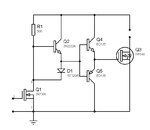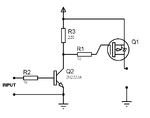alexan_e
Administrator

usually you want a Vgs of about 10-12v to get the rated Rds-on but I don't know if you have available any voltage that high.
The Pmosfet is rated 0.117 ohm @10v, that is the close to the best you can get, if you want lower you have to change mosfet
The Pmosfet is rated 0.117 ohm @10v, that is the close to the best you can get, if you want lower you have to change mosfet




